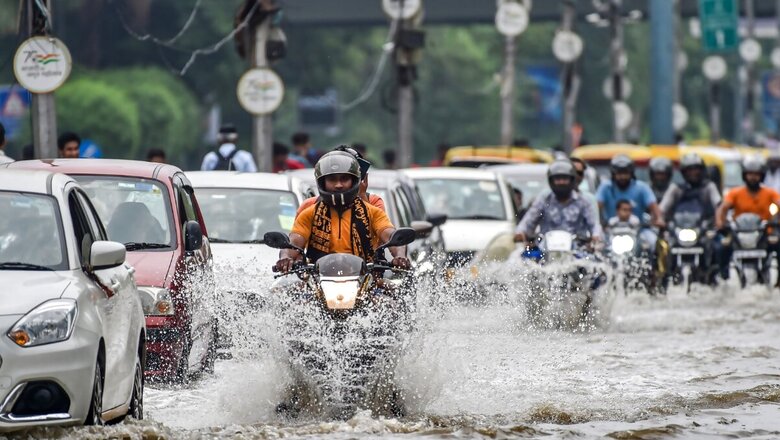Cholera, Typhoid, Dengue, Hepatitis, And More: Flood Brings Risk of Deluge of Diseases for Delhiites

views
As several parts of Delhi-NCR continue to reel from a flood-like situation after Yamuna’s water level rose to an all-time high, residents of these areas have become vulnerable to several health-related risk factors. Health experts told News18 that the recent flooding poses significant health risks to the residents, particularly those living along the riverbanks. One of the top concerns is that the stagnant water becomes a breeding ground for insects and mosquitoes, which provides space for the growth of bacteria, viruses, and parasites.
Waterlogging also increases the risk of waterborne diseases such as cholera, typhoid fever, dysentery, zika, dengue, and hepatitis.
“Stagnant water can become a breeding ground for disease-causing organisms which increases the risk of cholera, typhoid, dysentery, and hepatitis A,” Dr Manjeeta Nath Das, senior consultant, internal medicine, at Narayana Superspeciality Hospital in Gurugram, told News18.
Also, contaminated water can enter the drinking water supply, leading to widespread infections, said Dr Nitin Rathi, senior consultant, pulmonology, at Dharamshila Narayana Superspeciality Hospital in Delhi.
Echoing a similar concern, Rathi said that waterlogging creates favourable conditions for mosquito breeding, increasing the prevalence of diseases like malaria, dengue fever, and zika virus.
Asthma, allergy, and fungal infections
According to doctors, prolonged exposure to damp environments can lead to respiratory issues including allergies, asthma, and bronchitis.
Mould growth and increased humidity contribute to the release of airborne allergens and respiratory irritants.
Rathi explained that frequent contact with waterlogged areas can cause various skin infections, such as fungal infections, dermatitis, and cellulitis.
“Bacteria and fungi thrive in moist conditions, and when they come into contact with broken or compromised skin, infections can occur,” he said.
Apart from physical illnesses, such conditions make people vulnerable to mental illnesses as well.
Aishwarya Raj, a clinical psychologist, explained that continuous waterlogging can lead to heightened levels of anxiety and stress.
“The uncertainty and disruption caused by the flooded surroundings can create a sense of helplessness and insecurity, making individuals feel overwhelmed,” she said.
Raj added that this could make people experience fear and trauma due to the potential risks associated with waterlogging, such as the fear of being trapped, the loss of property, or the fear of contracting waterborne diseases.
“In areas affected by waterlogging, people may be isolated from their usual social networks,” she said, adding that “it is important to note that the impact of waterlogging on mental health can vary from person to person.”
What to do?
The first rule is to avoid contact with stagnant water and ensure it does not touch food or utensils.
According to Dr Kamal Verma, senior consultant, department of internal medicine, at Amrita Hospital, Faridabad, residents should boil water to ensure its safety for drinking purposes.
“Apply mosquito repellent creams and utilise mosquito nets at home,” said Dr Verma.
Das from Narayana Superspeciality Hospital also advised people to maintain personal hygiene, including frequent handwashing with soap and clean water.
One of the ways to protect against mosquito-related diseases is to eliminate stagnant water around living areas to prevent mosquito breeding apart from wearing long sleeves and pants.
Also, waterlogging can obscure hazards beneath the surface, leading to accidental injuries like slips, falls, or drowning.
“Be cautious of hidden debris, open manholes, or uncovered drains. If you must be in waterlogged areas, use appropriate safety equipment and follow guidelines provided by local authorities,” Nath warned.


















Comments
0 comment